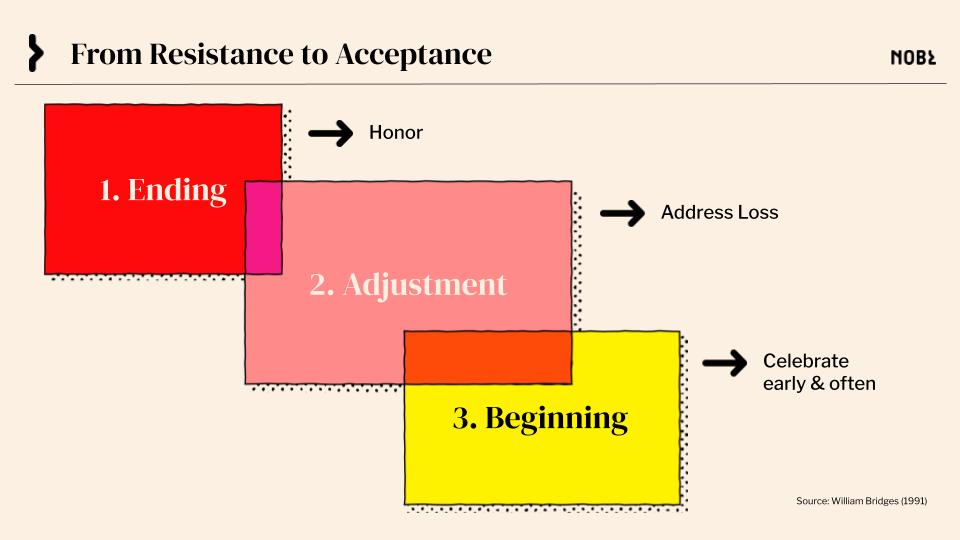As much as you might like for organizational change to be instantaneous—a “flick of the switch” from one state to another, seemingly overnight—the reality is that people need time to adjust and adapt. And when it comes to managing this process, William Bridges literally wrote the book on it, breaking transition down into three phases:

- The Ending. While leaders in particular are eager to skip to the new way of doing things, the first step is recognizing the need for change and developing a plan. One common mistake we see leaders make at this stage is to disparage the “old” way of doing things, thus de-valuing all the work that people have put in to get the team to this point. Instead, recognize and celebrate the team’s contributions as you prepare for the future.
- The Adjustment. During this phase, the team adapts to new ways of working, with all the frustrations that typically come with learning something new. This is when people are most likely to experience the losses associated with change, so make sure you’ve identified which are most relevant for your team, and how you can address them. It can also be helpful to reflect on where you are in the change journey, and prepare for the inevitable ups and downs.
- The Beginning. Finally, the team starts performing in a new way. It’s especially helpful to acknowledge milestones and celebrate success so that the team realizes progress is being made, and is motivated to continue working towards the future state.
Regardless of which phase you’re in, frequent and consistent communication with your team will make the transition smoother. And while you will undoubtedly face a lot of unknowns, as well as sensitive topics that can’t be shared with the wider team, it’s critical to share what you do know, even if that’s “still no updates.” In the absence of information, people will create their own assumptions about the changes that are taking place, so be as transparent as possible.
To help you navigate these conversations with your team, address the “Four P’s”: purpose, picture, plan, and part to play.
- Pick a person. First, identify your stakeholders: who will be impacted, positively or negatively, by this change? Your messaging may need to change based on your audience.
- The story you’ll tell. Give your audience context for why these changes are necessary: what forces are you responding to? How does the vision for the future connect to the company’s original purpose?
- Their part to play. Let them know what you need from them. Remember one of the most common losses people experience when going through change is a loss of control—change happens to, not with, them—so invite them to shape their own future.
- What you don’t know. Finally, what are you, the leader, still unsure about? We’ve added this to account for exactly those unknowns—it’s a good opportunity to model vulnerability in front of your team and build psychological safety.













